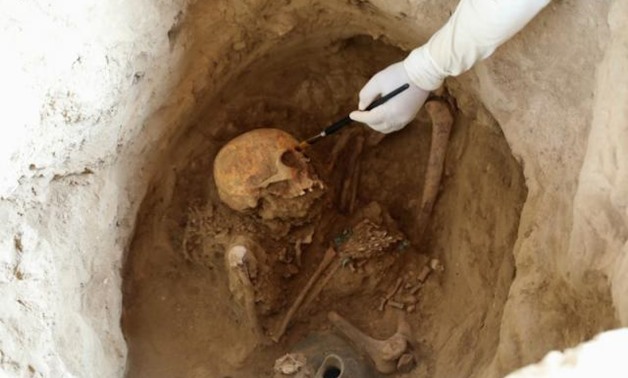
An archaeologist works during unearthing of tombs and human remains from the Inca culture at Huaca de las Abejas, in Tucume Archaeological Complex in Lambayeque, Peru July 4, 2018. REUTERS/Guadalupe Pardo.
TUCUME, Peru (Reuters) - Archaeologists in Peru have uncovered an extensive Incan burial site inside an adobe pyramid in a coastal desert valley far from the Andean heart of the empire.
Two dozen cave-like tombs with human remains and pottery from the Incan culture have been unearthed so far at the Tucume Archaeological Site, Jose Manuel Escudero, director of the archaeological team working there, said on Thursday.
The finding was a reminder of the vast terrain - from the Pacific coast to the high Andes - that the Incan Empire, using a network of roads and a labor-based tax system, controlled before the Spanish conquest in the 16th century.
Tucume, some 400 miles north of the Peruvian capital, Lima, is believed to have been first settled by the Lambayeque coastal people at the turn of the 12th century before being occupied by the Chimu culture and later the Incan Empire some 500 years ago.
“There’s a reutilization of the space,” Escudero said, adding that archaeologists have yet to find evidence that the space changed hands through warfare. “It appears each culture just found that it was convenient to use this site to govern.”
The remains of men holding spiked spondylus shells, which were used in rituals by pre-Colombian people in Peru, were found in five of the tombs, said Escudero.
Another tomb appears to have been made for a member of the elite because the body was buried on a bed of ceramic pieces and wrapped carefully.
“It’s wrapped in more than 4 shrouds, one of which is quilted,” said Escudero. “You’re not going to bury an ordinary person that way.”
Escudero said archaeologists hope the discoveries will tell them more about the so-called Pyramid of the Bees where the tombs were found, one of the several adobe structures at the site. “The Pyramid of the Bees must have had great significance for them to be buried there,” he said.

Comments
Leave a Comment